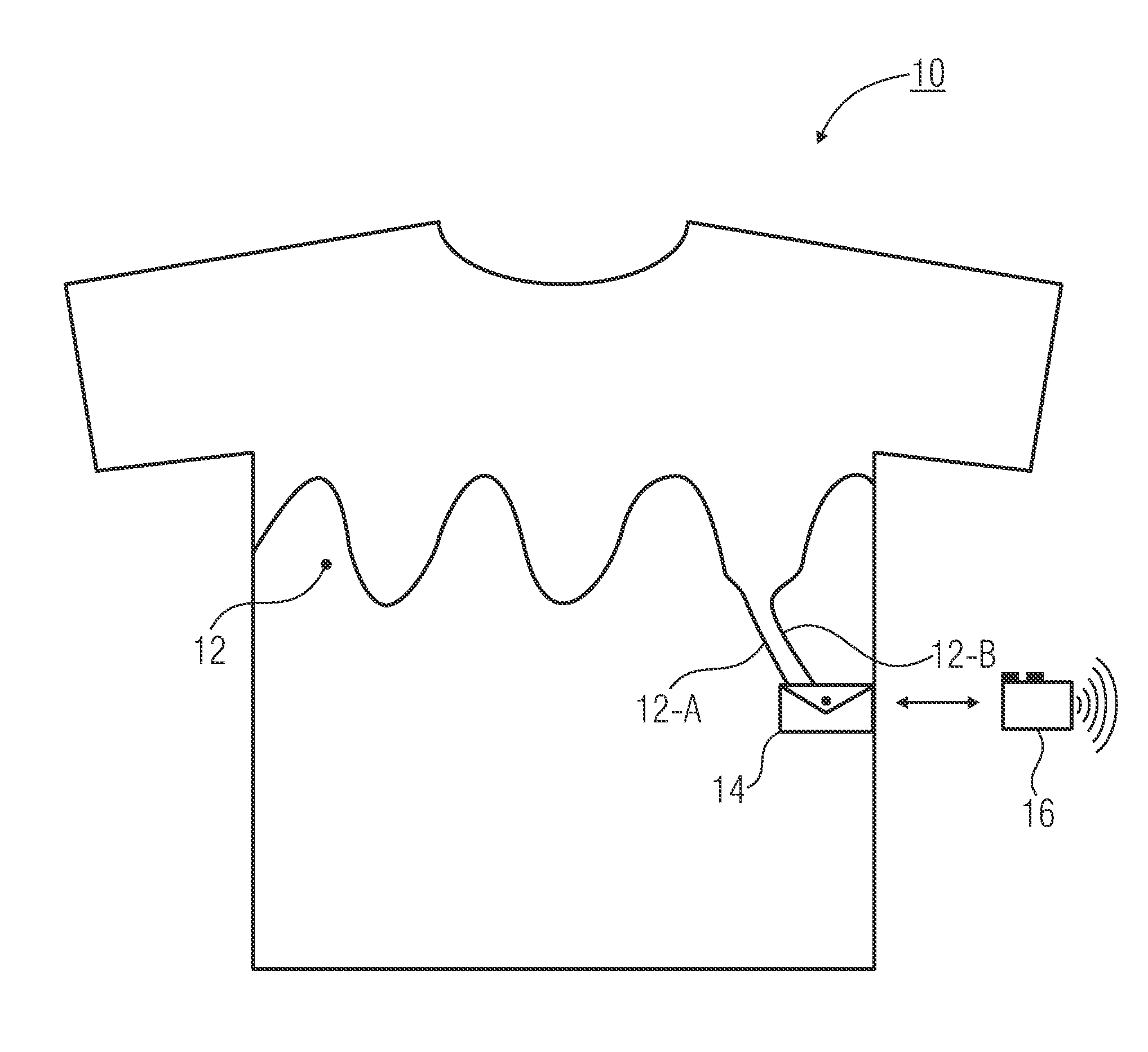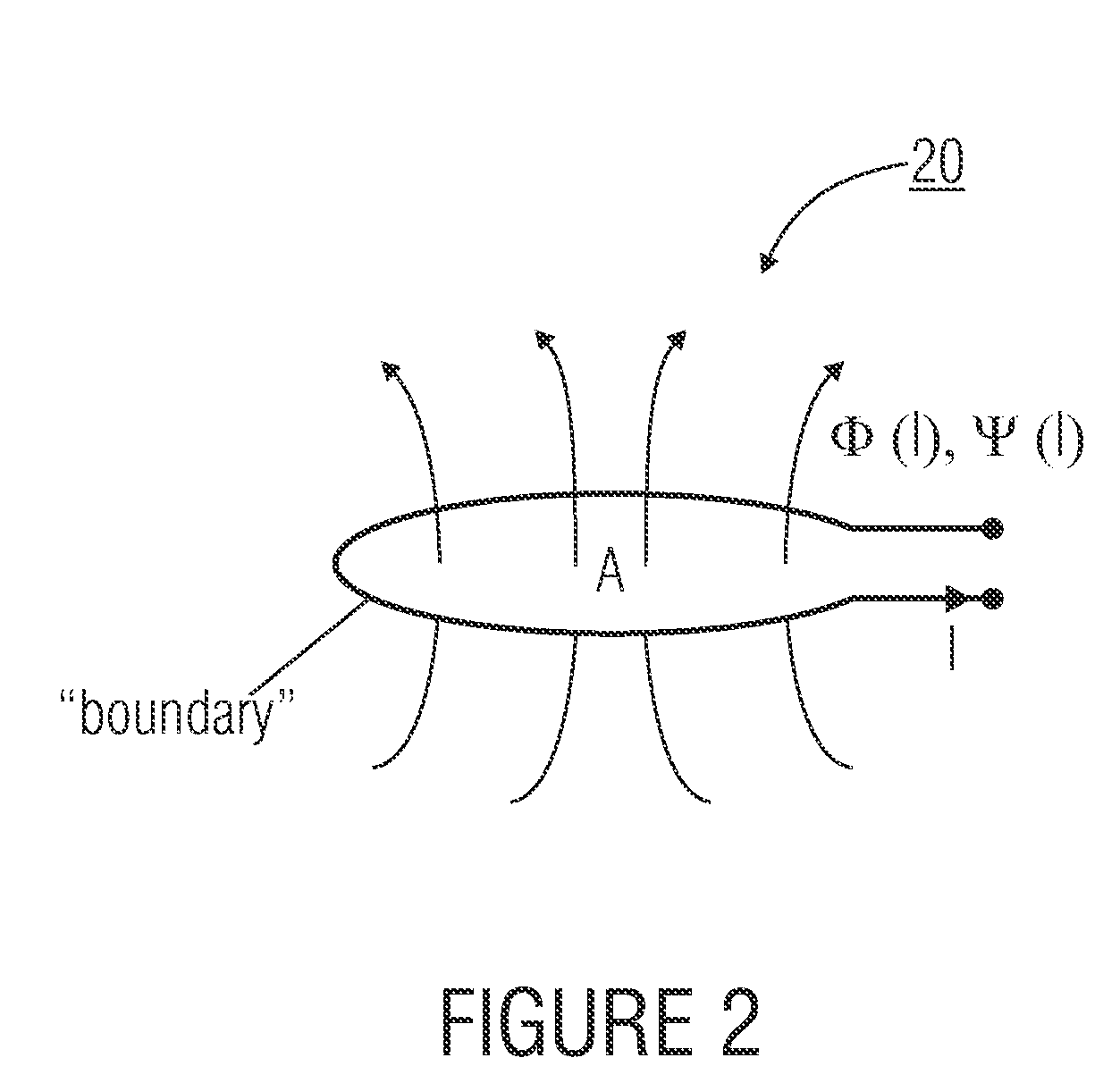Garment for detecting respiratory movement
a technology garments, applied in the field of living beings' devices for detecting respiratory movements, can solve the problems of changing positions, unsatisfactory patients, and garments cannot be differentiated from “normal” tight garments, and achieves the effect of precise and reliable measurement of respiratory movements, improved comfort and/or esthetics, and less spa
- Summary
- Abstract
- Description
- Claims
- Application Information
AI Technical Summary
Benefits of technology
Problems solved by technology
Method used
Image
Examples
Embodiment Construction
[0029]Regarding the following description, it should be noted that in the different embodiments, equal or similar functional elements have the same reference numerals and, hence, descriptions of these functional elements are interchangeable in the different embodiments illustrated below.
[0030]FIG. 1 shows a schematic illustration of a garment 10 for detecting respiratory movement of a living being.
[0031]Although in the following the detection of the respiratory movement of human beings is mentioned, embodiments of the present invention are, in no way, limited to humans, but can also be correspondingly applied to animals, in particular, mammals.
[0032]The garment 10 is implemented according to embodiments of the present invention in order to be pulled over the thorax of a person or living being, respectively. In embodiments of the present invention, the garment 10 can not only be pulled over the thorax, but over the complete torso of a person. The garment can, for example, be implemen...
PUM
 Login to View More
Login to View More Abstract
Description
Claims
Application Information
 Login to View More
Login to View More - R&D
- Intellectual Property
- Life Sciences
- Materials
- Tech Scout
- Unparalleled Data Quality
- Higher Quality Content
- 60% Fewer Hallucinations
Browse by: Latest US Patents, China's latest patents, Technical Efficacy Thesaurus, Application Domain, Technology Topic, Popular Technical Reports.
© 2025 PatSnap. All rights reserved.Legal|Privacy policy|Modern Slavery Act Transparency Statement|Sitemap|About US| Contact US: help@patsnap.com



